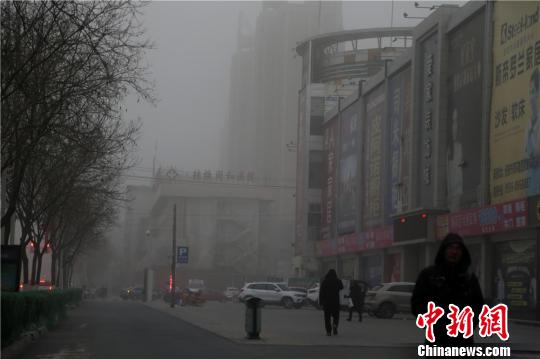
China news agency, Beijing, February 9 (Reporter Ruan Yulin) The Ministry of Environmental Protection of China informed the media on the evening of the 9th that a systematic dusty weather process occurred in China, which affected Inner Mongolia, Gansu, Ningxia, Shaanxi, Shanxi, Hebei and other places, and the hourly concentration of inhalable particulate matter (PM10) rose sharply, with the hourly concentration of PM10 in Zhangye City, Gansu Province exceeding 3,600 micrograms per cubic meter.
Influenced by the gale weather, a systematic sandstorm weather process occurred from north to south in China from noon on February 8. The sand was mainly located in southern Mongolia, central and western Inner Mongolia, China and western Gansu. The sand and dust weather process first appeared in cities such as Xilingol, Jiayuguan and Jiuquan, and then the influence of sand and dust expanded from Inner Mongolia and Gansu to Ningxia, Shaanxi, Shanxi, Hebei and other provinces. Among them, at 20 o’clock on the 8th in Zhangye City, the hourly concentration of PM10 exceeded 3,600 micrograms per cubic meter, which is the highest concentration of PM10 so far.
The monitoring shows that the Beijing-Tianjin-Hebei region and its surrounding areas began to be affected by this dusty weather process in the early morning of February 9 due to the cold and high pressure in the south. On the morning of 9th, the concentration of PM10 increased rapidly in several cities in north-central Shanxi. Among them, the concentration of PM10 in Shuozhou exceeded 1000 micrograms per cubic meter at 8: 00 on the 9th, and the hourly air quality index (AQI) reached 500. Lvliang, Xinzhou, Shuozhou and other cities also experienced hourly AQI reaching 500. At 9: 00 on the 9th in Beijing, dust was transported from the west, and the air quality deteriorated slightly, and gradually improved in the afternoon.
The forecast shows that at present, the dust front has arrived in the central and southern areas of Beijing, Tianjin and Hebei, and is still moving eastward and southward, and will gradually affect southern Hebei, western Shandong and northern Henan, and the air quality of relevant cities will deteriorate by 1-2 levels on the basis of the original forecast. (End)
关于作者